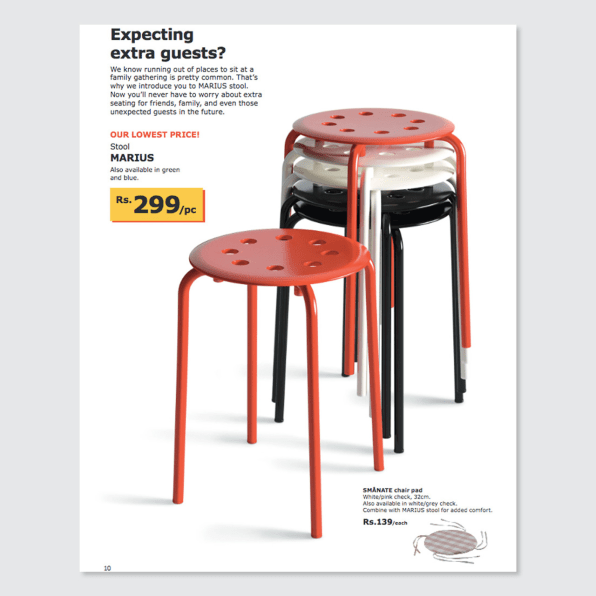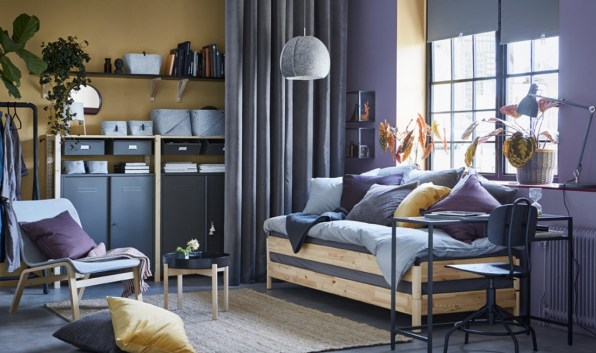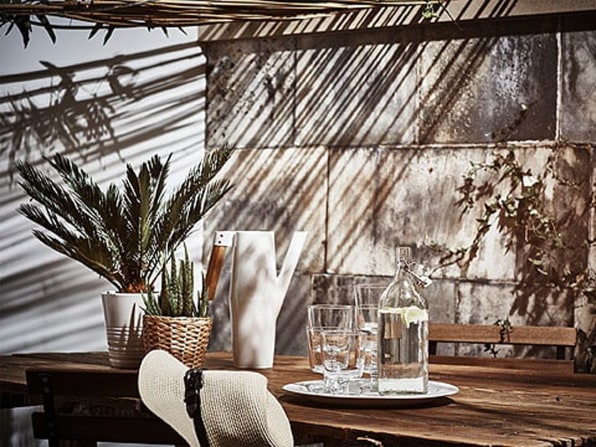The Swedish furniture company just opened its first store in India–and just like Ikea does in most countries, it has carefully adjusted the inventory, design, and even food to fit local tastes.
This week, Ikea opened its first store in India–a feat the company has been planning for many years. But while the big, blue exterior of the store looks the same, the interiors, from the displays to the products themselves, have been subtlety tailored to accommodate cultural differences.
It’s a strategy Ikea has used to expand from its origins in Sweden, now reaching 30 markets in Europe, the Americas, Africa, and Asia: keep the general idea and most of the products the same, with small tweaks to help ease people into the Ikea view of the world (and convince them to shop there). After all, what an American shopper is looking for is different from what an Indian consumer wants. To discern the differences, the company sends its representatives into homes all over the world to talk to people, asking what their needs are, what they can afford, and how they like to shop.
As Ikea has expanded into Asia over the last five years, this has been a crucial part of its strategy–along with preserving the company’s instantly recognizable brand and its famed shopping experience. But even crucial elements of Ikea’s business, like flatpacking most furniture, have to be rethought in some Asian countries, where consumers expect that furniture is assembled for them.
Here’s how Ikea tweaked its design in its new Indian store–and around the world.

INDIAN FURNITURE CAN BEAT THE HEAT AND HUMIDITY
In the hot, humid climate of southern India, untreated pine furniture–which might work in cooler climates–is a no-go. As the New York Timesreports, that meant the company had to adjust some of its furniture designs to use different materials. And because people tend to clean their floors using water, the designers added risers to keep furniture from getting wet.
The way Indian families use their space also impacted the number of product options: Because impromptu family gatherings are common, Ikea offers a greater number of stools and folding chairs in the India store.

CHINESE IKEA SHOWROOMS GET THEIR VERY OWN BALCONIES
The displays in the showroom are culturally relevant as well: In China, the showroom includes an entire section on balconies, which are common in Chinese homes. But in southern China, these balcony displays show them being used to dry clothes, while in northern Chinese Ikea stores, the displays show the balcony as another place for food storage–both according to the custom in the area.

KOREAN IKEA BEDS ARE BUILT FOR TINY SPACES
Just as people use their living spaces differently, cultural expectations around bedrooms–and beds–are also wildly different. Americans, for instance, have a particular set of standard sizes for bed frames and mattresses. When the company was expanding into the United States, it made the mistake of putting the dimensions in centimeters rather than in terms of “queen” and “king” sizes, though it quickly fixed the error. When the company first opened stores in China, it had a similar problem: It used the standard sizes for Hong Kong, which are shorter than those on the mainland, before implementing the local sizes.
Ikea’s displays in the new Indian store are more culturally aware: Because Indian children tend to sleep in their parents’ bedrooms for longer periods of time, the sample bedroom included a small bed for a family’s youngster.
Sleeping habits have even led to entirely new products. Before opening its store in South Korea in 2014, Ikea conducted 900 interviews and visits–and ended up designing a “super single” sized bed specifically for Koreans that is optimized for small bedrooms but offers a little more space than your average single.

SWEDISH MEATBALLS GET LOCAL FLAVORS
In the company’s new store in Hyderabad, India, there are Swedish meatballs still on the menu at the cafeteria–but they’re vegetarian ones. According to the Times, the cafeteria also serves Indian staples like samosas, biryani, and gulab jamun, a popular dessert. In South Korea, Ikea serves kimchi bibimbap and Korean barbecue.

The Indian cafeteria is also far bigger than Ikea’s other restaurants, which are a staple of the store experience–it can seat 1,000 people. The Times writes that this is “to accommodate the more leisurely dining style of Indian families,” though that might mean that Ikea is aware that trekking out to the store might be an activity for the entire extended family–and all of the cousins will be invited.

AMERICAN DRINKING GLASSES ARE AS BIG AS VASES
Regardless of culture, the kitchen is often a centerpiece of the home–but that doesn’t mean it’s used in the same way or shouldn’t adjust to each culture’s needs.

The Times reports that Ikea adjusted the heights of countertops in its Indian showroom because Indian women tend to be shorter. Even the cutlery they’re selling is slightly different: Because many Indian people prefer to use spoons over knives, Ikea decided not to sell the packets of children’s cutlery it sells in other countries that include knives. Instead, it sells sets of four spoons for the equivalent of 22¢. In the company’s Chinese stores, Ikea stocks far more rice cookers and chopsticks than it would in other countries. The catalog for the Chinese market is different as well: The 2017 version shows a much more confined kitchen space when compared side by side with the American one, because Chinese homes tend to have smaller kitchens.
Ikea also had to change its designs for American audiences. When the company started to expand its presence in the United States in the 1990s, it found that it was selling an uncommonly large number of vases. Eventually, executives realized that Americans were buying the vases to drink out of, as the Swedish company’s glasses were too small for local tastes. Even Swedish design-loving Americans needed their own cultural accommodation.
–
This article first appeared in www.fastcompany.com
Seeking to build and grow your brand using the force of consumer insight, strategic foresight, creative disruption and technology prowess? Talk to us at +9714 3867728 or mail: info@groupisd.com or visit www.groupisd.com

